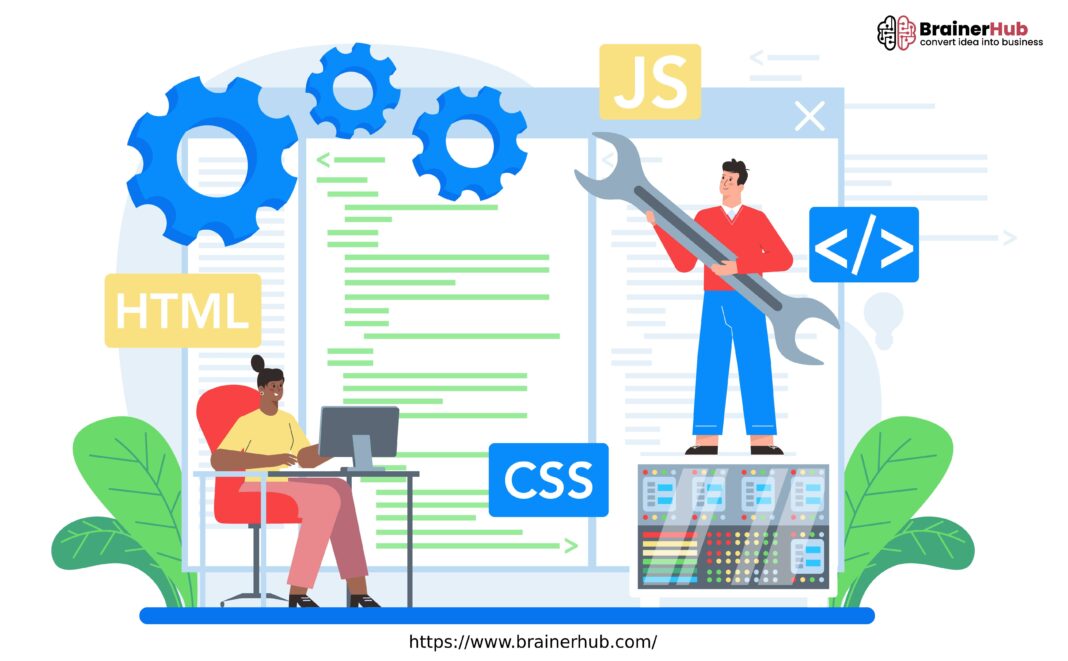Introduction
Webflow has emerged as a powerful tool for eCommerce Web Application Development, offering a comprehensive suite of features and capabilities to streamline the design and deployment process. In this comprehensive overview, we delve into the key advantages offered by Webflow in eCommerce site creation. From its intuitive user interface to its advanced SEO tools and flexible customization options, Webflow provides a robust platform for building visually stunning and highly functional online stores.
The Attraction of Webflow for eCommerce Website Development
- Webflow’s appeal lies in its ability to empower designers and developers to create custom, visually engaging websites without the need for coding. Its intuitive visual editor, flexible design tools, and extensive template library make it an attractive option for businesses looking to establish a unique online presence. Additionally, Webflow’s eCommerce functionality enables users to build fully integrated online stores with ease, offering a seamless shopping experience for customers.
Key Advantages Offered by Webflow in eCommerce Site Creation
- Webflow offers several advantages for eCommerce site creation, including an intuitive user interface, responsive design features, eCommerce-centric functionality, integrated content management system (CMS), SEO tools, animation capabilities, third-party integrations, and flexible customization options. These features collectively contribute to the creation of visually stunning, user-friendly, and highly functional eCommerce websites that drive sales and enhance brand visibility.
Intuitive User Interface for Seamless Navigation
- Webflow’s intuitive user interface allows designers and developers to create and customize websites with ease. Its drag-and-drop editor, visual styling tools, and real-time preview functionality make it easy to design and modify website layouts, content, and styling without writing code. Additionally, Webflow’s grid and flexbox layout systems enable users to create responsive designs that adapt seamlessly to different screen sizes and devices.
Harnessing Responsive Design Features in Webflow
- Webflow prioritizes responsive design, ensuring that websites look and perform optimally across various devices and screen sizes. Its responsive design features, including breakpoints, flexible layout options, and viewport settings, enable designers to create fluid and adaptive layouts that adjust dynamically based on the user’s device. This ensures a consistent and engaging user experience across desktops, tablets, and smartphones.
Leveraging eCommerce-Centric Functionality in Webflow
- Webflow’s eCommerce functionality provides a comprehensive suite of tools for building and managing online stores. From product catalogs and inventory management to checkout and payment processing, Webflow offers all the essential features for running a successful eCommerce business. Its customizable product pages, flexible pricing options, and integration with popular payment gateways make it easy to create and sell products online.
Exploring Webflow’s Integrated Content Management System
- Webflow’s integrated content management system (CMS) enables users to create, manage, and publish content seamlessly. Its intuitive editor, customizable content fields, and versioning system make it easy to organize and update website content, including product descriptions, blog posts, and landing pages. Additionally, Webflow’s CMS API allows for seamless integration with external data sources and third-party applications.
Enhancing Visibility with Webflow’s SEO Tools
- Webflow offers a range of built-in SEO tools to help improve website visibility and rankings in search engine results. From customizable meta tags and page titles to XML sitemaps and canonical URLs, Webflow provides all the essential features for optimizing website content for search engines. Its SEO-friendly markup, fast loading times, and responsive design also contribute to improved search engine performance.
Unleashing Creative Potential with Webflow’s Animation Capabilities
- Webflow’s animation capabilities enable designers to add interactive and engaging animations to their websites with ease. Its intuitive animation editor, timeline-based controls, and pre-built animation effects make it easy to create custom animations that enhance the user experience and bring websites to life. From subtle hover effects to immersive parallax scrolling, Webflow offers endless possibilities for creative expression.
- Webflow is a robust and intuitive web design platform that simplifies the process of creating sophisticated web applications. While it shares similarities with traditional web application frameworks in terms of facilitating the development of web-based software, Webflow distinguishes itself by offering a visual, code-free approach to web design and development. Unlike conventional frameworks that require developers to write code from scratch, Webflow provides a user-friendly interface where users can design and customize their web applications using a drag-and-drop editor and pre-built components. This approach streamlines the development process, allowing users to focus on the design and functionality of their web applications without the complexities of coding. With Webflow, building feature-rich and visually stunning web applications has never been easier or more accessible.
Integrating Third-Party Services Seamlessly with Webflow
- Webflow’s extensive ecosystem of integrations allows users to connect their websites with third-party services and applications seamlessly. From email marketing and customer relationship management (CRM) to analytics and social media, Webflow integrates with a wide range of tools to streamline workflows and enhance website functionality. Its open API and webhook capabilities also enable custom integrations and automation.
Unraveling the Flexibility and Customization Options in Webflow
- Webflow offers unparalleled flexibility and customization options, allowing users to create truly unique and personalized websites. Its flexible design tools, custom code integration, and extensive template library enable designers to bring their creative visions to life without limitations. Whether it’s customizing typography, colors, or layouts, Webflow empowers users to create websites that reflect their brand identity and meet their specific requirements.
Ensuring Swift and Secure Hosting with Webflow’s Infrastructure
- Webflow provides fast and secure hosting for all websites built on its platform, ensuring optimal performance, reliability, and security. Its global content delivery network (CDN), automatic SSL encryption, and distributed infrastructure ensure fast loading times and protection against security threats. Additionally, Webflow’s hosting platform is fully managed, allowing users to focus on building and growing their online businesses without worrying about server maintenance or downtime.
Conclusion
Webflow offers a comprehensive solution for eCommerce website development, providing a range of features and capabilities to streamline the design, creation, and management process. From its intuitive user interface and responsive design features to its eCommerce-centric functionality and integrated content management system, Webflow empowers businesses to create custom, visually stunning, and highly functional online stores that drive sales and enhance brand visibility. By leveraging Webflow’s extensive toolkit, businesses can create a unique online presence that stands out in today’s competitive eCommerce landscape.
You may also like,
- E-commerce SEO Tips to Implement by the End of the Year
- Understand the Objectives of an eCommerce Application Testing
- What Is Responsive Web Design and Why Is This Necessary?







